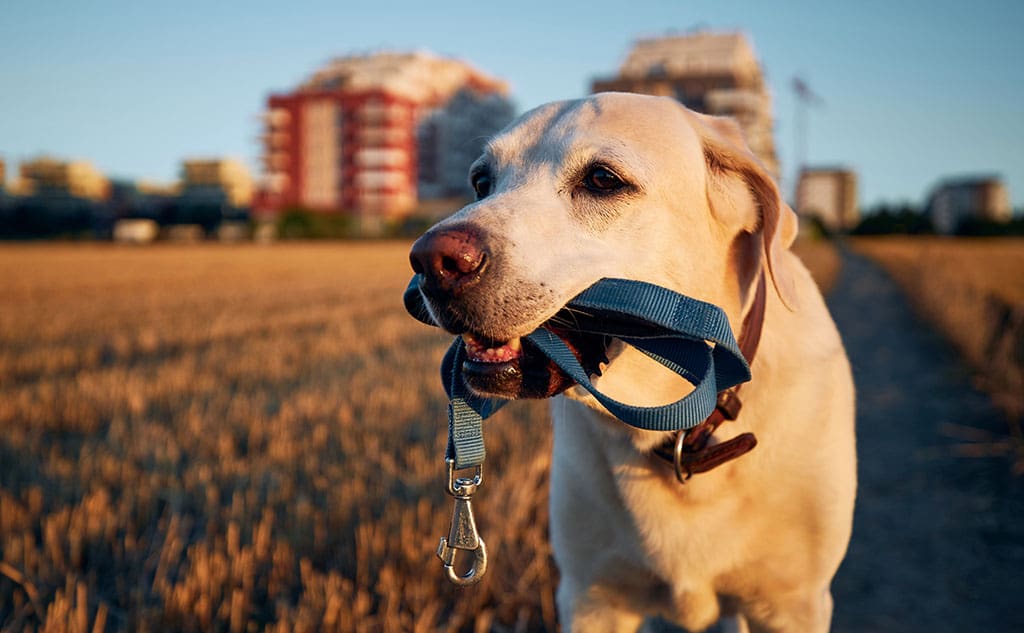
Leash training is a critical aspect of pet ownership that many pet owners struggle with. Whether you’re a new pet owner or a seasoned pro, you may be looking for ways to improve your leash training skills and address common problems. In this guide, we’ll explore the ins and outs of leash training, including the best types of leashes, techniques for effective training, and common problems that arise during the training process.
Choosing the Right Type of Leash
The first step in leash training is choosing the right type of leash for your pet. There are several types of leashes available, including standard leashes, retractable leashes, and training leashes. Each type has its benefits and drawbacks, and it’s important to choose one that is suitable for your pet’s size, breed, and temperament.
Standard leashes are the most common type of leash and are suitable for most pets. They come in various lengths and materials, such as nylon or leather. Retractable leashes are also popular, but they can be dangerous if not used properly. Retractable leashes allow your pet to roam more freely, but they can easily become tangled and may cause injury to your pet or others.
Training leashes are designed specifically for leash training and come in various styles, such as slip leads or head collars. These leashes are useful for addressing specific behavioral issues, such as pulling or leash reactivity.
Establishing a Routine
Consistency is key when it comes to leash training. It’s crucial to establish a routine and stick to it to avoid confusing your pet. If you’re inconsistent with your training, your dog may become frustrated and less likely to respond to your commands.
To establish a routine, choose a time and place for your daily walks and stick to it. Start with short walks and gradually increase the distance and duration as your pet becomes more comfortable with the routine.
Using Positive Reinforcement
Positive reinforcement is an effective technique for leash training. When your pet exhibits good behavior, such as walking calmly on the leash, reward them with treats, praise, or playtime. This technique helps to reinforce good behavior and makes leash training a positive experience for your pet.
One way to use positive reinforcement is by incorporating clicker training into your leash training routine. Clicker training involves using a clicker to signal to your pet that they have performed a desired behavior, followed by a reward. This technique is useful for reinforcing good behavior and can be incorporated into any leash training routine.
Leash Training Techniques
There are several effective techniques for leash training, including teaching your pet to stop pulling on the leash, teaching your dog to heel, and introducing distractions to leash training.
To teach your dog to stop pulling on the leash, you can use a technique called “stop and go.” When your dog pulls, stop walking and wait for them to return to your side. Once they do, continue walking. You can also use positive reinforcement to encourage your dog to stay by your side.
Heel training is a more advanced leash training technique that involves teaching your dog to walk directly beside you. To start heel training, begin by having your dog walk on a loose leash beside you. Gradually decrease the distance between you and your dog until they are walking directly beside you. Use positive reinforcement to reward your dog for staying by your side.
Introducing distractions to leash training can be challenging but is essential for socialization and advanced training. Begin by introducing small distractions, such as other dogs or people, and reward your dog for staying focused on you. Gradually increase the level of distraction and continue to reward good behavior.
Common Problems with Leash Training
Leash training can be challenging, and there are common problems that arise during the training process. Some of the most common problems include pulling on the leash, leash reactivity, and fear of the leash.
Pulling on the leash is a common problem that can be addressed using the “stop and go” technique mentioned earlier. It’s important to be consistent with this technique and avoid yanking on the leash, as this can cause injury to your pet.
Leash reactivity is another common problem that occurs when your dog becomes overly excited or aggressive when encountering other dogs or people on the leash. This behavior can be addressed using desensitization and counter-conditioning techniques, which involve gradually exposing your dog to the trigger while rewarding good behavior.
Fear of the leash is a less common problem but can occur in some pets. If your dog is afraid of the leash, it’s important to address the issue using positive reinforcement and gradual exposure to the leash. Start by introducing the leash in a non-threatening way, such as placing it on the ground, and reward your dog for approaching it. Gradually increase the level of exposure until your pet is comfortable wearing the leash.
Conclusion
Leash training is an essential aspect of pet ownership that requires patience, consistency, and positive reinforcement. By choosing the right type of leash, establishing a routine, and using effective training techniques, you can ensure a positive and successful leash training experience for both you and your pet. Addressing common problems, such as pulling on the leash and leash reactivity, can also help make the training process smoother and more enjoyable. Remember to be patient and consistent, and your pet will soon be walking calmly and confidently by your side.


